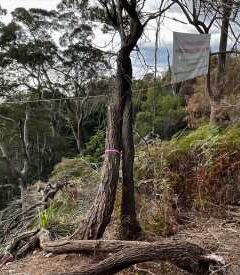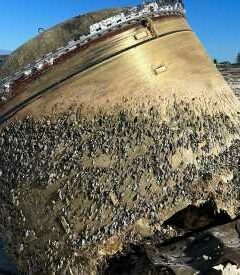Home » Australasia »
A High-Profile Australia-English Cricket Series
The Australia Letter is a weekly newsletter from our Australia bureau. Sign up to get it by email. This week’s issue is written by Natasha Frost, a reporter in Melbourne.
This week, Australia has, not for the first time, been convulsed by a major cricket controversy that divided cricket fans in England and Australia. (It invited commMore than 150 years ago, a different Australian tour captured the attention of Britons.ent even from the Australian prime minister, Anthony Albanese: “Same old Aussies — always winning!”)
More than 150 years ago, a different Australian tour captured the attention of Britons. In 1868, over 47 matches in more than five months, an all-Aboriginal team played across England, winning 14 matches, drawing 19 and losing another 14.
“Plainly, the team is not to be regarded as the beginnings of Test cricket,” said Bernard Whimpress, an eminent Australian cricket historian. “But it was a very interesting issue, in terms of colonial relations.”
In the second half of the 19th century, as traditional Aboriginal ways of life came under immense pressure from often violent European colonization, many Aboriginal people had few alternatives but to work for white settlers, whether in domestic service or as shepherds, stockmen or shearers.
The young Aboriginal men who grew up on the colonial livestock holdings known as “stations” in Western Victoria lived much like the white people they labored alongside, speaking English, wearing Western clothes, and eating food unlike what they were used to, Whimpress writes in his book, “Passport to Nowhere.”
Learning cricket — a sport that British settlers around the world imagined could be used to “civilize” colonized populations — was part of that transition, and from the early 1860s, matches between Aboriginal and white teams were promoted as a novelty.
In 1866, the rancher William Hayman and the cricketer Tom Wills formed a team in Western Victoria of young Aboriginal men who went on to tour New South Wales, and other areas of Victoria.
But it was not until a series of matches late that year against the Melbourne Cricket Club — including a Boxing Day match with an audience of 8,000 — that the major commercial possibilities of an Aboriginal tour came into focus.
Within weeks, Hayman and a fellow rancher, Tom Hamilton, had signed a 12-month contract for the team of 13 to travel to Sydney and then England, backed by the Sydney-based English professional player Charles Lawrence.
At the time, there was significant British interest in what was seen as “exotic peoples from the Empire,” Whimpress writes, “especially those under threat of extinction,” giving the scheme still more appeal.
After 74 days at sea, they disembarked at Gravesend, England, and were apparently warmly received by a curious public, who were particularly drawn to demonstrations of boomerang and spear throwing during breaks in play, which Lawrence promoted as “traditional Aboriginal games.”
The players themselves were introduced with nicknames like Johnny Mullagh (for Unaarrimin), or Cuzens (who had been known by Yellana), and wore different colored sashes and caps emblazoned with a silver boomerang and bat.
“They are the first Australian natives who have visited this country on such a novel expedition, but it must not be inferred they that they are savages,” The Sporting Life, a British sports newspaper, reported after an early match.
“The cricket was good-quality club cricket, of a reasonable standard,” Whimpress said. “They did well, considering their opponents and the very foreign climatic conditions.” The players were almost always either traveling or working, playing 99 days out of a possible 126, across 15 English counties.
Their success, Chris Harte writes in the Penguin History of Australian Cricket, was a clear indication of Aboriginal people’s ability “to adapt their substantial skills to European ways,” and a number of the players were all-rounders of remarkable prowess.
But the tour had its tragic moments, too. Though it earned its organizers thousands of pounds, there is no evidence that the team was paid for its work, and one player, Bripumyarrimin, who was known as King Cole, died after a “chest complaint.” Two others, whom historians believe were in poor health and perhaps grieving their teammate, returned to Australia two months ahead of schedule.
Just a year later, a law was introduced that limited Aboriginal people’s ability to move freely, ostensibly to prevent their exploitation. Many of the players returned to Aboriginal reserves, and a number died in obscurity. Only Johnny Mullagh, a star player, continued to play and remained free of reserve life.
“The traditional view is that cricket was never played by Aboriginal people again,” Whimpress said. Instead, he characterizes what actually happened as “discontinuity.”
“There were attempts all over the country, some through missions, some with play on stations, but it would start and after a while it would fold,” he said. “There were different reasons for that, some of them racist. But for the people themselves — their lives were fractured, they were pushed around, and the idea of playing cricket wouldn’t necessarily have been a major concern to them.”
Here are the week’s stories.
Australia and New Zealand
Cricket Dispute Has Australia Leading and England Crying Foul. A play at the Ashes was technically called correctly, yet it had England’s fans chanting, “Same old Aussies, always cheating.” Even Britain’s prime minister has weighed in.
Fireworks for All, One Day Only, in Australia’s Last Frontier. In the vast and sparsely populated Northern Territory, residents’ sense of rugged individualism finds expression every July 1, explosively.
Hong Kong Offers Bounties as It Pursues Dissidents Overseas. The rewards of $128,000 for information leading to the prosecution of dissidents who have fled Hong Kong reflect stepped-up pressure to intimidate activists beyond the reach of the government.
C.T.E. Found for First Time in Female Pro Athlete. Heather Anderson, an Australian rules football player, was found posthumously to have had the degenerative brain disease.
Around the Times
What 120 Degrees Looks Like in One of Mexico’s Hottest Cities. During the most recent heat wave, residents of the northern city of Hermosillo struggled to breathe in the scorching temperatures.
Threads Becomes Most Rapidly Downloaded App, Raising Twitter’s Ire. Instagram’s new app was downloaded more than 30 million times in 16 hours. Twitter threatened legal action against its rival.
‘Wherever I Am, I Am Always Birding.’ The master illustrator David Sibley, of the widely popular Sibley field guides, describes how the most important aspect of drawing a bird may just be that it changes how you see.
Are you enjoying our Australia bureau dispatches?
Tell us what you think at [email protected].
Like this email?
Forward it to your friends (they could use a little fresh perspective, right?) and let them know they can sign up here.
Natasha Frost writes the Europe Morning Briefing and reports on Australia, New Zealand and the Pacific from Melbourne, Australia. More about Natasha Frost
Source: Read Full Article


